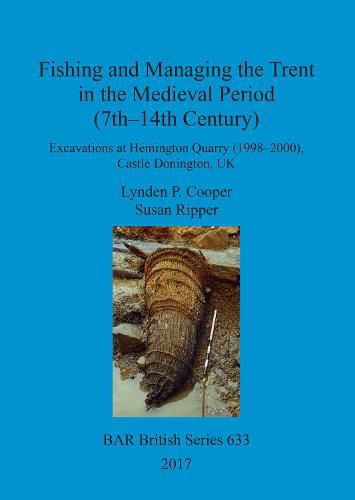Readings Newsletter
Become a Readings Member to make your shopping experience even easier.
Sign in or sign up for free!
You’re not far away from qualifying for FREE standard shipping within Australia
You’ve qualified for FREE standard shipping within Australia
The cart is loading…






This title is printed to order. This book may have been self-published. If so, we cannot guarantee the quality of the content. In the main most books will have gone through the editing process however some may not. We therefore suggest that you be aware of this before ordering this book. If in doubt check either the author or publisher’s details as we are unable to accept any returns unless they are faulty. Please contact us if you have any questions.
Towards the end of the 20th century, sand and gravel extraction in the Middle Trent moved from the higher terrace gravels down onto the wide floodplain zone. The lower Hemington terrace gravels presented waterlogged conditions with excellent preservation of riverine structures, organic artefacts and ecofacts. One of the first discoveries occurred at Hemington Quarry in 1985: a 12th century mill dam and vertical water mill. An ongoing watching brief recorded many riverine structures and culminated in the discovery of three medieval bridges. The present book describes the discoveries from 1998 to 2000 of numerous medieval riverine structures. Three fish weir complexes of the late 7th-12th centuries produced rare evidence for the capture of migrating silver eels. A 12th-century mill dam was later reused as a basket fishery. A series of stone and timber bank-side structures of the 14th century reflect a change in fishing technology: the cribs were used to manage the river and provide river conditions suitable for net fishing.
$9.00 standard shipping within Australia
FREE standard shipping within Australia for orders over $100.00
Express & International shipping calculated at checkout
This title is printed to order. This book may have been self-published. If so, we cannot guarantee the quality of the content. In the main most books will have gone through the editing process however some may not. We therefore suggest that you be aware of this before ordering this book. If in doubt check either the author or publisher’s details as we are unable to accept any returns unless they are faulty. Please contact us if you have any questions.
Towards the end of the 20th century, sand and gravel extraction in the Middle Trent moved from the higher terrace gravels down onto the wide floodplain zone. The lower Hemington terrace gravels presented waterlogged conditions with excellent preservation of riverine structures, organic artefacts and ecofacts. One of the first discoveries occurred at Hemington Quarry in 1985: a 12th century mill dam and vertical water mill. An ongoing watching brief recorded many riverine structures and culminated in the discovery of three medieval bridges. The present book describes the discoveries from 1998 to 2000 of numerous medieval riverine structures. Three fish weir complexes of the late 7th-12th centuries produced rare evidence for the capture of migrating silver eels. A 12th-century mill dam was later reused as a basket fishery. A series of stone and timber bank-side structures of the 14th century reflect a change in fishing technology: the cribs were used to manage the river and provide river conditions suitable for net fishing.